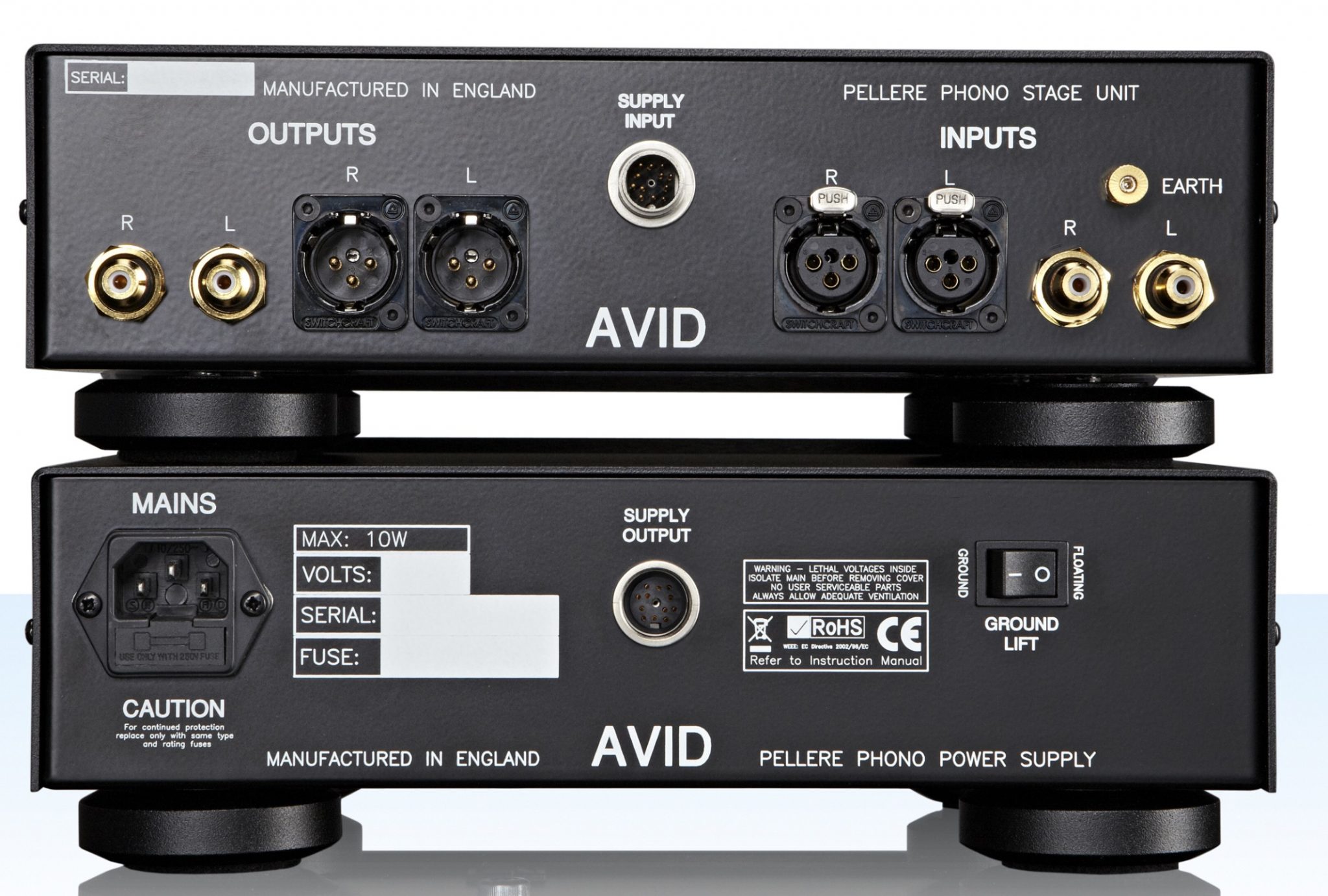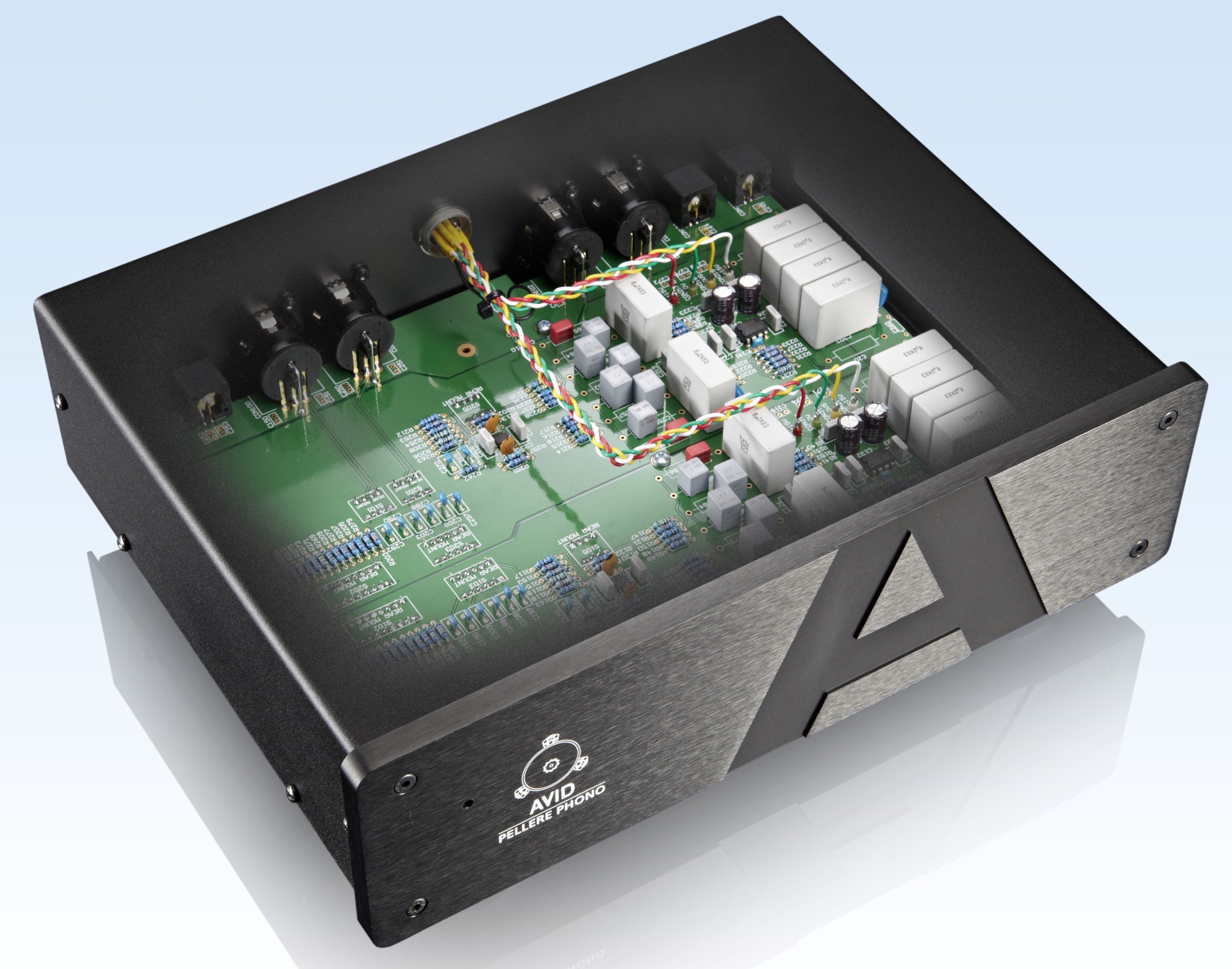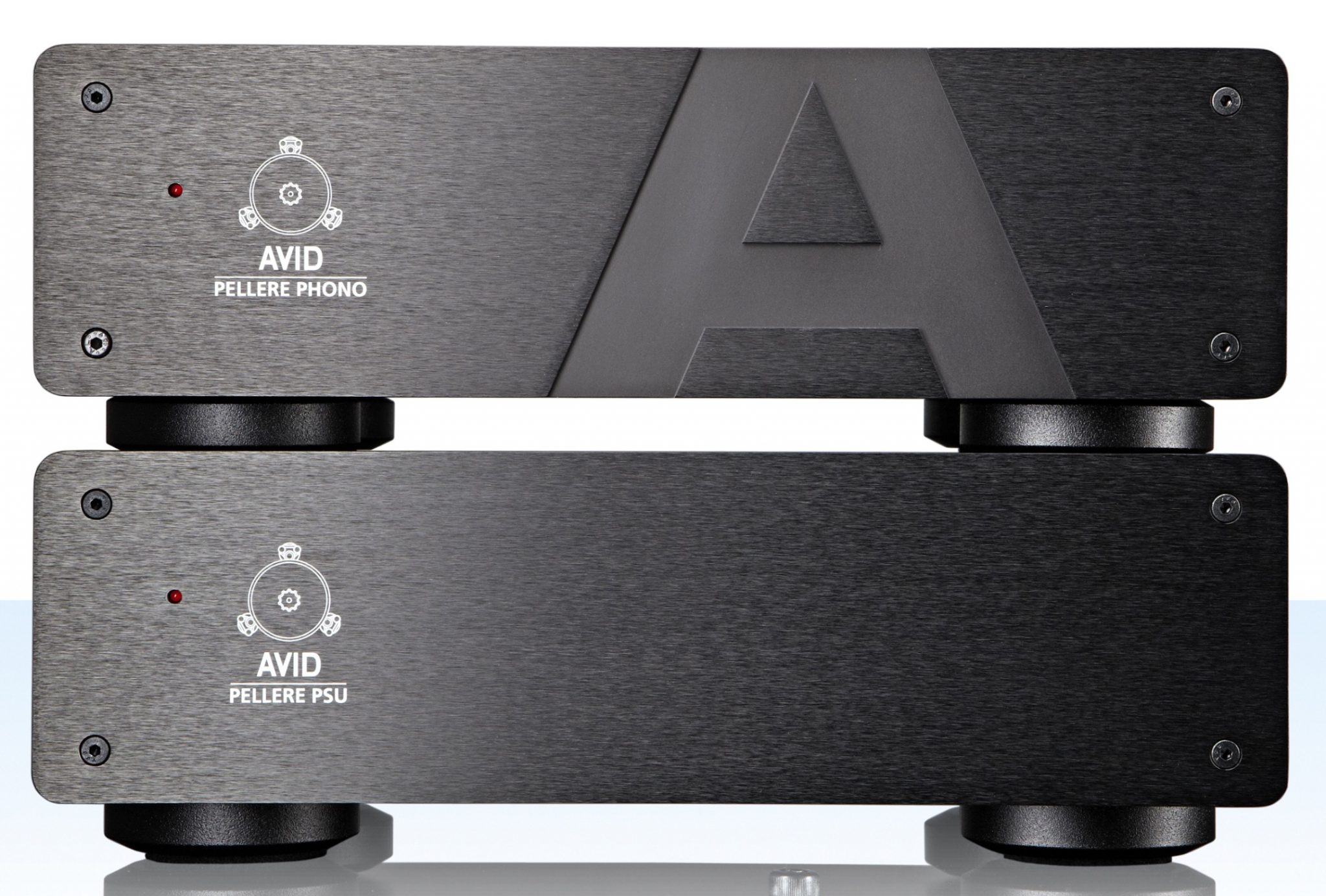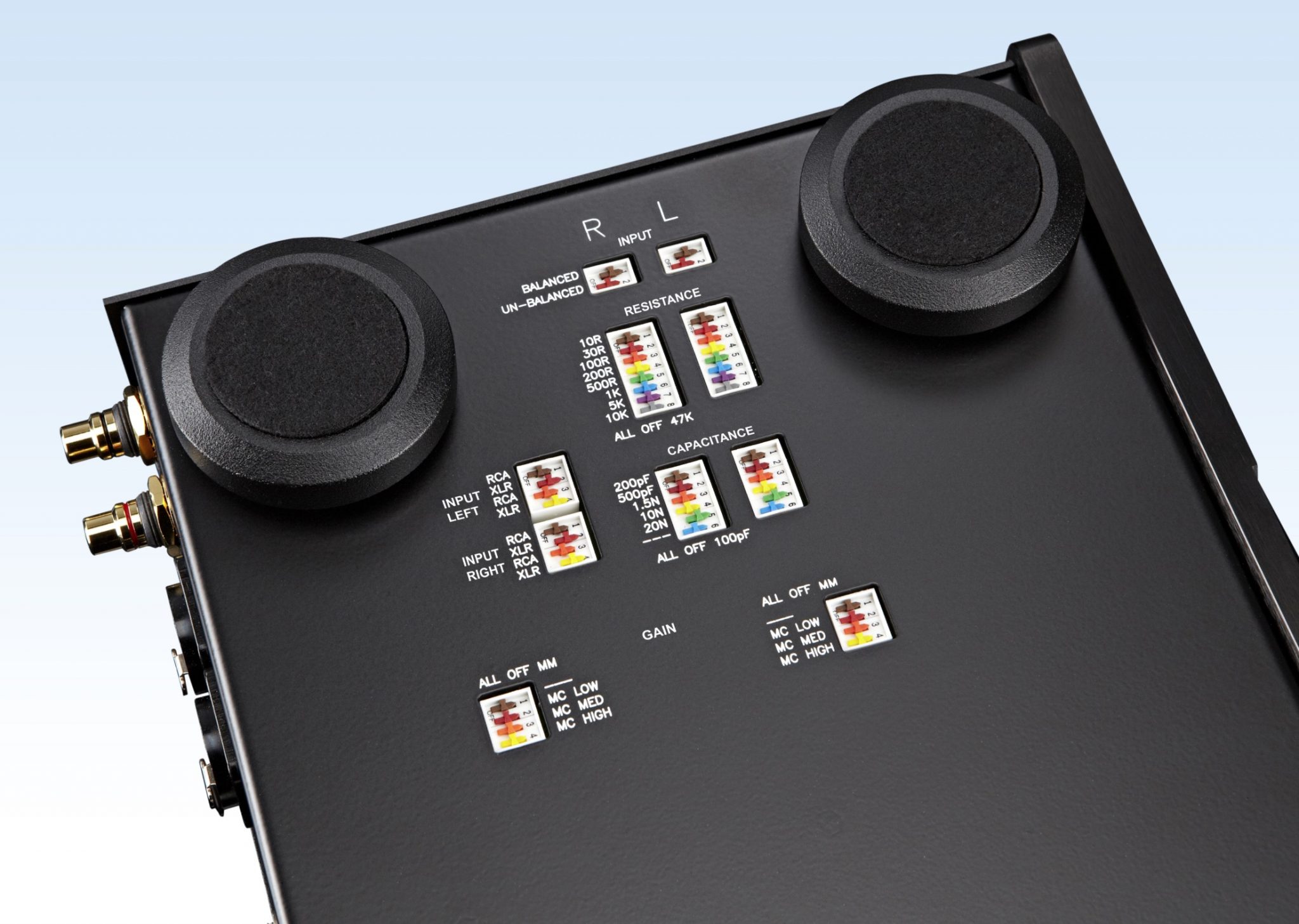The Article
AVID Pellere phono amplifier: An Avid Listen
3rd April 2016
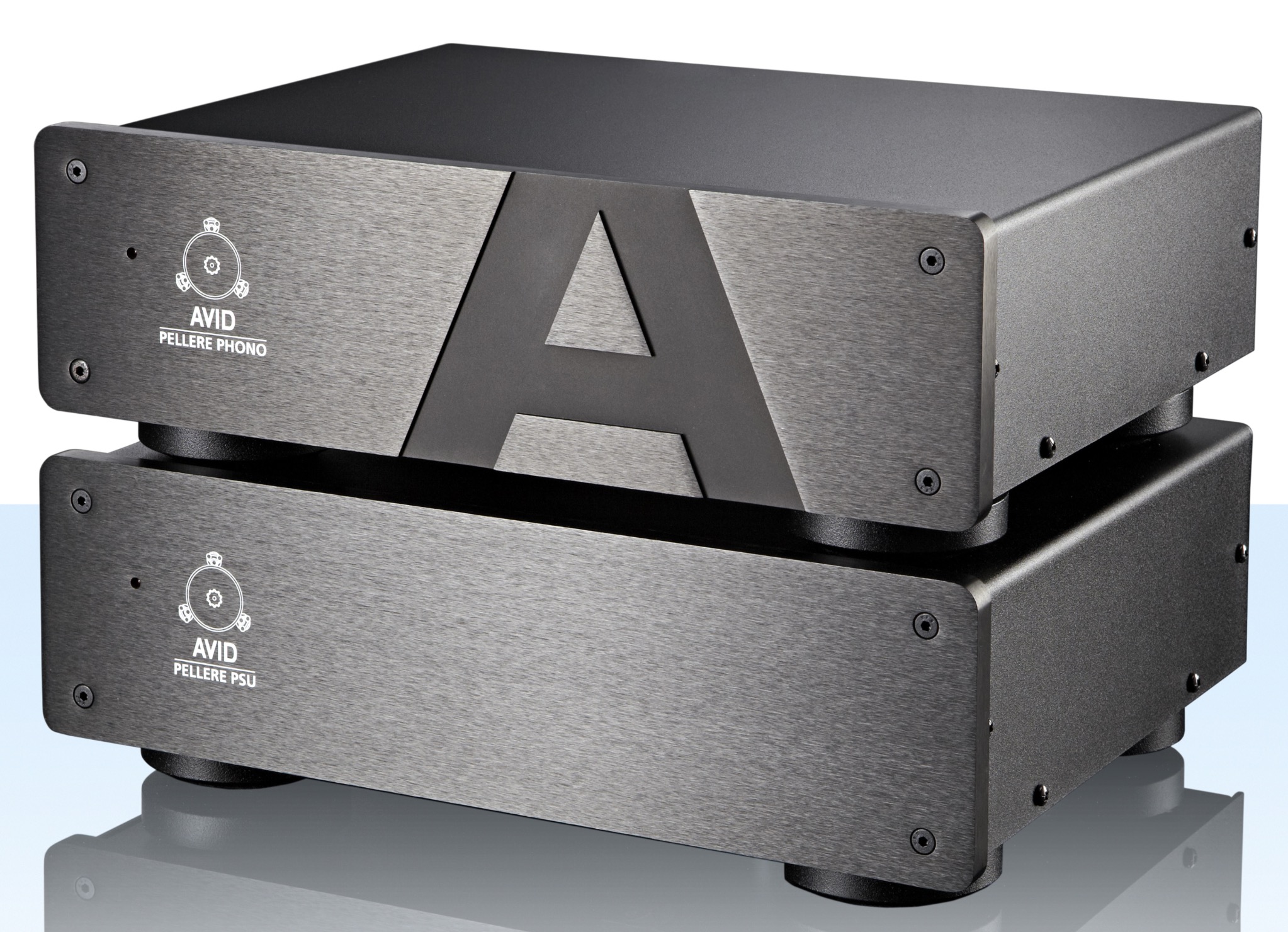
It might not be the newest phono amp on the market but Paul Rigby was told that it had never been reviewed, anywhere. So, always up for a challenge…
I’ve always liked the look of the Pellere. Well, to be honest, I always like the look of any phono amp that splits itself into two boxes: the pre, as it where, and the power unit. The possibility of decent sound output is a good one with this arrangement as noise isolation is enhanced, giving sonic detail a fighting chance.
In fact, the Pellere mirrors the Avid design pioneered by Avid’s own flagship design, the Pulsare II phonostage, which I’ve already reviewed for the UK print magazine HiFi World. The Pellere bridges the gap downstream to the Pulsus phonostage.
Like the high-end Pulsare II, the Pellere is fully balanced throughout and retains the same internal components, which helps to reduce noise and distortion. A passive RIAA (with Neumann HF correction) circuit using high-end capacitors runs alongside and an external regulated 300va power supply is included.
Whilst inputs and outputs remain, both XLR and RCA, Gain, Resistance and Capacitance are all adjustable using DIP switches from the base panel. The Pellere offers a wealth of choices for any cartridge geek.
That the choice exists is great and I applaud Avid for that. I do take issue with Avid in how this choice is accessed, though. Just take a look at the accompanying image of the gamut of DIP switches underneath this thing (it looks like a M&Ms colour chart). No-one – no-matter how good the accompanying manual is in explaining these switches – should have to go through the ‘DIP switch dance’, not on this scale, anyway. It’s enough to turn off the less experienced vinyl user. I felt the urge, after completing all of the DIP switch selections for this review, to shout out ‘Bingo!’. Avid should have installed an easier to use knob/switch system on the front fascia of the chassis, as it does with the higher-end Pulsare. OK, this might have increased the budget somewhat. So whatever it took: cheaper knobs, basic toggles, switches made from Jelly Beans…whatever, a different system should have been utilised. We need a Pellere II.
As an aside, this issue makes me yearn for some form of automatic sensing system during cartridge installations to provide the exact and optimum settings. That is, you connect your cartridge and ‘wham’ the arm ‘senses’ your cartridge and does it all for you. No phono amp on the market escapes this problem. Who will ‘do an Apple’ and provide it? It’s 2015 for god’s sake and we’re still struggling with vinyl installation methods from the early 70s.
SOUND QUALITY
Rant over and onto sonic issues. I began with Bruce Brubaker’s solo piano piece via his Glass Piano LP and the Philip Glass composition Mad Rush. The Pellere, made an immediate impression in how this emotive and rather delicate rendition was presented to the ear. The music tends to sit in the higher frequency areas for much of the early part of the track and what I would expect to hear is a detailed and nuanced rendition but with a slight pressure upon the ear in terms of upper frequency extension. Not brightness or even stridency but a slight shouting effect, as if Brubaker plays too close to the microphone. With Avid’s Pellere, that slight shouty effect was gone. It’s almost as if the Pellere gently pulled Brubaker away from the mic a few inches, allowing him to give a full dynamic performance without any sense of blooming or blurring in those upper frequency areas. The effect is to increase the degree of focus and, from that, stemmed a greater degree of clarity. Not only that, the entire track appears to flow easily from the pianist’s fingers. There was a tremendous sense of musicality which was highlighted by the keyboard trilling runs that he performed way up there, in the high notes. The conglomeration of these higher notes can, again, cause slight blurring that affects the transparency of the piece. During the review, though, the Pellere separated each note, providing a concise delivery. That is, each note was an individual and spaced from its neighbour. Hence, the piano itself flowed with an ease that increaseed the enjoyment of the entire piece.
Now onto harder rock from the Electric Light Orchestra, from 1971 in fact, and First Movement. Because the Pellere lowered noise to allow detail to be delivered in a more precise and characterful manner, I was urged to increase the volume for this prog rock track which only emphasised the punchy and tight bass that was presented by both the drums but also the meaty and aggressive cellos which were both woody and textured in their approach. There was plenty of string vibrations and creaky cello bodies that added a heap of personality. It was almost the instrumental equivalent of an unshaven, muscly, sword wielding, rampant pirate figure coming at you in a alcoholic haze. The sound was old and powerful and ever so slightly uncontrolled, in nature. The Pellere, tracked all of this which gave the music power and gravitas. The main ‘vocal’ of this instrumental sequence was a Spanish-like guitar which had a slightly different mastering EQ applied to it, a slightly claustrophobic effect which was both tight yet rich in delivery. The Pellere, allowed this guitar and each instrument space to deliver its own message over the capacious soundstage.
During Morgana King’s Like A Seed, her early, often bloom-ridden, introductory vocal was kept under admirable control by the Pellere, while the introductory bass guitar was both funky and foot-tapping in nature. Her own delivery, which had a Barbra Streisand/Cleo Lane quality, provided a dynamic range that some hi-fi components find difficult to hang onto and control. The Pellere did well here, translating her impressive delivery calmly and efficiently which allowed the ear to concentrate upon the song instead of her own sonic fireworks. More than that, her voice didn’t mask the subtle secondary percussion.
CONCLUSION
Offering plenty of features and variables that should cope with any cartridge that you throw at it, the Avid Pellere provides an impressive sense of control over musical presentation but still allows the music to run free. It doesn’t restrict the music or even guide it in any way. Rather, it tracks and communicates in a calm and wholly convincing manner.
AVID PELLERE PHONO AMPLIFIER
Price: £2,500
Website: www.avidhifi.co.uk
Tel: 01480 869 900
GOOD: musicality, focus, dynamics, feature count
BAD: the seemingly thousands of DIP switches

